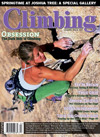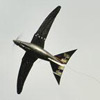 These days it seems like everyone is into fast-and-light alpine climbing, even plants. Now, according to researchers in Germany, valley plants are racing up the flanks of the Bernina Alps, Switzerland. The range is home to Piz Palu (12,812 feet) and the Biancograt (AD) on Piz Bernina (13,284 feet), the easternmost 4,000-meter peak in the Alps. Continue reading Plants Gone Alpine
These days it seems like everyone is into fast-and-light alpine climbing, even plants. Now, according to researchers in Germany, valley plants are racing up the flanks of the Bernina Alps, Switzerland. The range is home to Piz Palu (12,812 feet) and the Biancograt (AD) on Piz Bernina (13,284 feet), the easternmost 4,000-meter peak in the Alps. Continue reading Plants Gone Alpine
All posts by LL
Motets, Monks, and Mortar
 An architectural historian has taken a choir to Venice to determine how much Renaissance architects and composers shaped each other’s work. Last spring, with acousticians and musicologists, Deborah Howard of Cambridge University in the U.K. led an experimental public concert tour on which the Choir of St. John’s College, Cambridge, performed Renaissance works in 11 Venetian churches and monasteries, including the San Marco basilica.
An architectural historian has taken a choir to Venice to determine how much Renaissance architects and composers shaped each other’s work. Last spring, with acousticians and musicologists, Deborah Howard of Cambridge University in the U.K. led an experimental public concert tour on which the Choir of St. John’s College, Cambridge, performed Renaissance works in 11 Venetian churches and monasteries, including the San Marco basilica.
Recordings, as well as audience reactions, indicated that complex polyphonic pieces reverberated too much throughout large spaces such as the basilica but sounded right in San Marco’s smaller ducal chapel. Monastery chapels were the best settings for resonant but straightforward chants. And humbler parish churches adorned with sound-damping tapestries were suited to simple hymn singing. “Each church did generate the kind of acoustic that was appropriate” to its needs, says Howard, showing that architects designed with acoustics in mind.
Composers also probably tailored their work to specific buildings, says Howard, who presented her findings at this month’s Cambridge Science Festival. For example, the team found compositions calling for a double choir that in a reverberating space such as San Marco would achieve a “surround sound” effect. “We suppose that many musicians compose their work having in mind a very particular kind of place,” says applied physicist Francesco Martellotta of the Polytechnic University of Bari, “but in this case, it is clearly documented.”
First published as a Random Sample in Science Magazine: [html] [pdf]
Robot fliers in commando competition
 Robots inspired by moths, locusts, flies and swifts will take to the sky this week in an international competition for micro aerial vehicles in Agra, India. Teams will vie for the title — as well as up to US$600,000 in funding — for their tiny flying machines. Continue reading Robot fliers in commando competition
Robots inspired by moths, locusts, flies and swifts will take to the sky this week in an international competition for micro aerial vehicles in Agra, India. Teams will vie for the title — as well as up to US$600,000 in funding — for their tiny flying machines. Continue reading Robot fliers in commando competition
No, You’re Not an Impostor
 When a tenured professor admitted in a panel discussion that she had felt like a fraud as a graduate student, Abigail knew exactly what she meant. The professor told the group that she had worried that she’d been let into her graduate program on a fluke and that someday she’d make an error that would blow her cover. She had always believed her peers in graduate school were much smarter despite knowing that she had the best grades of the bunch. “She said that she realised much later that this was completely ridiculous thinking and that obviously she was smart enough,” says Abigail, a Ph.D. student in cell biology. “What she said really spoke to me.”
When a tenured professor admitted in a panel discussion that she had felt like a fraud as a graduate student, Abigail knew exactly what she meant. The professor told the group that she had worried that she’d been let into her graduate program on a fluke and that someday she’d make an error that would blow her cover. She had always believed her peers in graduate school were much smarter despite knowing that she had the best grades of the bunch. “She said that she realised much later that this was completely ridiculous thinking and that obviously she was smart enough,” says Abigail, a Ph.D. student in cell biology. “What she said really spoke to me.”